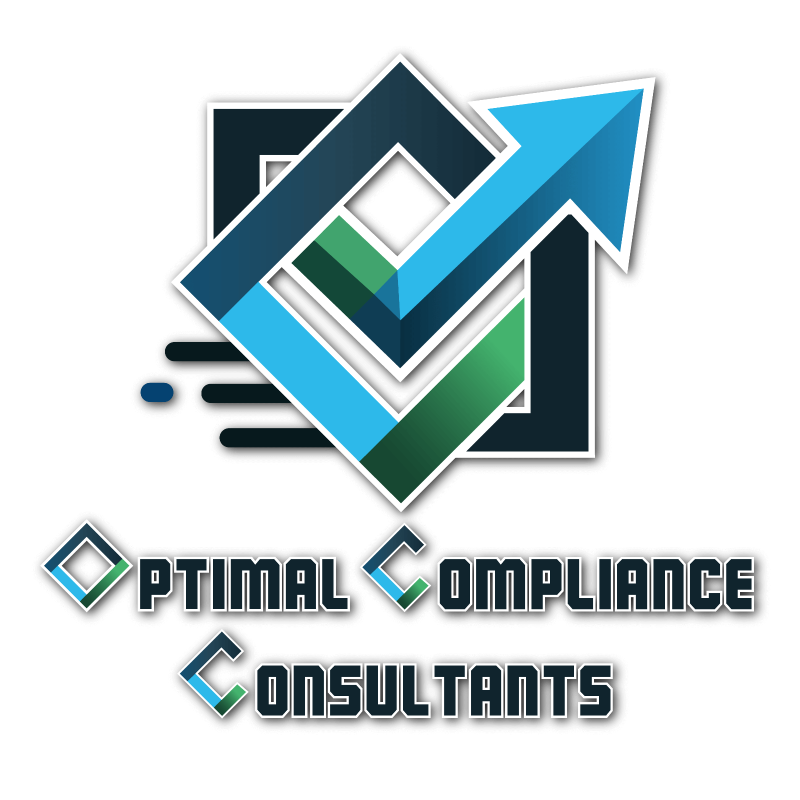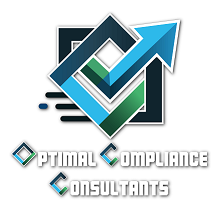Health and Safety Certification: The Key to Managing Workplace Health and Safety
Introduction
Health and safety are critical components of any business, as they have a direct impact on the well-being of employees, the efficiency of operations, and the overall success of the organization. Implementing an effective Health and Safety Management System (SMS) is vital in ensuring a safe working environment for all stakeholders. Health and safety certification, particularly through ISO 45001, plays a key role in this process.
ISO 45001 certification ensures that companies follow best practices to identify, manage, and mitigate health and safety risks, which not only comply with local and international regulations but also foster a culture of safety across all levels. In this blog, we will explore the importance of health and safety certification, with a focus on implementing a comprehensive safety management system and conducting workplace health and safety audits. Furthermore, we will delve into the industry-specific requirements for sectors such as logistics, manufacturing, food processing, and petrochemical industries, which require tailored approaches to safety management.
The Importance of Health and Safety Certification
Achieving health and safety certification through a recognized standard such as ISO 45001 demonstrates a company’s commitment to the well-being of its employees, the safety of its operations, and compliance with regulatory standards. Certification is not just about fulfilling legal obligations but is a proactive approach to ensuring that the company maintains a high standard of health and safety, reduces risks, and enhances the reputation of the business.
ISO 45001 provides a clear framework for establishing, implementing, maintaining, and improving an occupational health and safety management system (OHSMS). It is designed to help companies improve their overall safety performance, reduce work-related accidents and illnesses, and ensure a systematic approach to managing health and safety risks. The standard covers all aspects of health and safety, from risk assessment to employee training, emergency response, and incident reporting.
By obtaining ISO 45001 certification, companies can:
- Enhance employee safety and reduce work-related injuries and illnesses.
- Ensure compliance with legal, regulatory, and industry-specific safety standards.
- Improve workplace culture and employee satisfaction.
- Demonstrate a commitment to corporate social responsibility.
- Increase business opportunities by appealing to safety-conscious clients and contractors.
What is ISO 45001?
ISO 45001 is the international standard for occupational health and safety management systems (OHSMS). It provides organizations with the tools to create a safe working environment, identify hazards, assess risks, and establish control measures to mitigate potential dangers. ISO 45001 also emphasizes the need for continuous improvement, employee involvement, and leadership commitment.
Key features of ISO 45001 include:
- Risk Assessment: ISO 45001 requires companies to regularly assess workplace risks and implement measures to prevent accidents and injuries.
- Leadership and Employee Involvement: The standard emphasizes the need for top management to show leadership and commitment to health and safety while involving employees in safety activities.
- Legal Compliance: The standard ensures that organizations are in compliance with relevant local and international health and safety regulations.
- Emergency Preparedness: ISO 45001 provides guidelines for creating effective emergency response plans and ensuring that employees are trained to respond to emergencies.
- Continual Improvement: ISO 45001 promotes a culture of continuous improvement in safety management, ensuring that organizations constantly evaluate and enhance their safety practices.
Implementing a Safety Management System
Implementing an effective safety management system (SMS) is a vital part of maintaining a safe and compliant workplace. ISO 45001 provides the necessary framework for organizations to identify hazards, assess risks, and put in place effective control measures to mitigate potential safety issues. The implementation of a safety management system requires collaboration across all levels of the organization, from leadership to employees.
Essential steps in implementing a safety management system include:
- Establishing a Safety Policy: Organizations must develop a clear health and safety policy that outlines the company’s commitment to health and safety and defines its approach to risk management.
- Risk Identification and Assessment: Regularly assess workplace hazards and implement control measures to reduce risks to acceptable levels.
- Employee Training and Awareness: Ensure employees are trained on safety procedures and are aware of potential hazards in their workplace.
- Monitoring and Measurement: Continuously monitor safety performance through audits, inspections, and employee feedback to ensure that safety practices are being followed and are effective.
- Emergency Procedures: Develop emergency response plans and ensure that employees are trained in emergency procedures, such as evacuation plans, fire drills, and first aid.
Industry-Specific Health and Safety Management Requirements
While ISO 45001 provides a comprehensive safety management framework, different industries have specific health and safety challenges that require tailored solutions. Below are examples of how health and safety management systems are applied to industries like logistics, manufacturing, food processing, and petrochemical operations.
1. Health and Safety in the Logistics Industry
The logistics industry is one of the most dynamic and complex sectors when it comes to health and safety. Employees often work in environments where heavy machinery, transportation, and manual handling are involved, making them vulnerable to a variety of risks. Health and safety management systems in logistics must be comprehensive, addressing everything from safe driving practices to manual handling and warehouse safety.
Key health and safety risks in logistics include:
- Vehicle Accidents: Logistics companies must implement stringent driver safety protocols and ensure that vehicles are regularly maintained. This includes implementing tracking systems for drivers, setting clear guidelines for safe driving, and ensuring drivers are adequately trained to operate vehicles safely.
- Manual Handling: Proper training on lifting techniques, use of equipment like forklifts, and appropriate protective gear are crucial to prevent musculoskeletal injuries. Drivers and warehouse personnel need to be trained in safe lifting and handling techniques to reduce physical strain.
- Workplace Safety: Safety measures must be put in place to prevent accidents in warehouses, loading docks, and distribution centers. This includes ensuring that employees are aware of emergency evacuation routes, maintaining proper lighting and signage, and keeping the work environment free of hazards.
- Driver Management and Route Management: In addition to driver safety, logistics companies must implement a robust driver management system that tracks driver hours, enforces fatigue management protocols, and ensures that drivers take adequate breaks. Route management is also critical, ensuring that drivers take safe routes and avoid high-risk areas or difficult driving conditions.
- Vehicle Maintenance: A strict vehicle maintenance schedule is essential to ensure that trucks and other vehicles are in safe working condition. Regular inspections and servicing help to avoid accidents caused by faulty equipment or mechanical failures.
ISO 45001 provides a structured approach to identifying risks, managing driving safety protocols, and maintaining vehicle and warehouse safety. Furthermore, regular audits ensure compliance with both local regulations and international safety standards. Through its implementation, logistics companies can enhance the safety of their operations, reduce accidents, and protect both their employees and the goods being transported.
2. Health and Safety in the Manufacturing Industry
In manufacturing, employees are exposed to a range of physical, chemical, and ergonomic hazards, from heavy machinery to hazardous substances. A robust health and safety management system is essential to ensuring employee safety and mitigating risks associated with factory environments.
Key risks in manufacturing include:
- Machine Safety: Machine safety protocols must be in place to prevent accidents and ensure that machines are regularly serviced and properly operated.
- Chemical Exposure: Workers in manufacturing facilities may be exposed to harmful chemicals, requiring stringent safety measures, including PPE and ventilation systems.
- Ergonomics: Workers must be trained in ergonomically correct practices to avoid injuries caused by repetitive tasks or improper lifting techniques.
ISO 45001 assists manufacturing companies by implementing systems to identify hazards, manage risks, and ensure that proper controls are in place to protect workers from these common manufacturing hazards.
3. Health and Safety in Food Processing
Food processing is a high-risk industry where hygiene and safety are paramount. Employees in food factories face risks such as contamination, machinery accidents, and exposure to high temperatures. ISO 45001 certification ensures that food processors have the systems in place to mitigate these risks while maintaining hygiene and food safety standards.
- Hygiene Hazards: Workers must adhere to strict hygiene standards, including wearing protective gear and regularly cleaning equipment to prevent contamination.
- Machine Hazards: Many food processing plants involve machinery that can pose risks such as cutting, crushing, and heating, which require machine safeguards and operator training.
- Temperature Control: Ensuring that products are kept at safe temperatures to prevent contamination or spoilage.
ISO 45001 helps food manufacturers address these specific risks by establishing clear safety guidelines and audit procedures. These include hygiene protocols, machine safety standards, and regular employee training on safe food handling practices.
4. Health and Safety in the Petrochemical Industry
The petrochemical industry is inherently hazardous due to the handling of flammable substances, high-pressure systems, and extreme working conditions. A robust health and safety management system is vital to protect workers, maintain compliance, and ensure the safe operation of facilities.
Key risks in the petrochemical industry include:
- Chemical Exposure: Workers may be exposed to harmful chemicals, necessitating the use of PPE, ventilation systems, and stringent monitoring.
- Explosion and Fire Hazards: Safety systems must include fire suppression, emergency evacuation plans, and regular drills.
- Equipment Safety: Machinery used in drilling, refining, and chemical processing must be regularly inspected and maintained to prevent accidents.
ISO 45001 supports the petrochemical industry by providing a comprehensive framework to manage health and safety risks. By implementing risk assessments, emergency plans, and safety audits, petrochemical companies can maintain a safe working environment and ensure compliance with both local and international safety standards.
Conclusion
Health and safety certification, particularly through ISO 45001, is an essential step for organizations in managing workplace safety, reducing risks, and ensuring legal compliance. For industries such as logistics, manufacturing, food processing, and petrochemical, adopting a tailored safety management system is crucial to addressing the unique challenges and hazards associated with each sector.
By establishing robust health and safety practices, conducting regular audits, and ensuring continuous improvement, companies can create safer working environments that protect employees, improve operational efficiency, and enhance business reputation.





